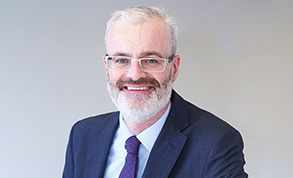News / Public service funding mechanisms undermine levelling-up promise
A new report from the Institute for Fiscal Studies – How much public spending does each area receive – said that NHS funding was ‘relatively well-targeted’ towards estimated spending needs, thanks to its needs-based spending formula and movement towards fair shares. But the system funding local government had ‘broken down’.
Two-thirds of areas are receiving a share of NHS funding within 5% of the amount they should receive based on estimated needs. But the gap between under- and over-funded local authority areas is much wider. Even if all areas set the same council tax rates, the South East would still receive a share of funding that is 9% higher than its share of estimated spending needs, and the North East 5% lower. This means there is inconsistent funding across the country for services such as social care, housing, transport, leisure centres and libraries, the report said.
In some areas, under-funding of some services relative to need is counterbalanced by over-funding for other services. But some areas receive a lower share of funding across multiple services. Dudley in the West Midlands, for example, receives £127 per capita less for the NHS, £122 less for local government and £47 less for police-services than if funding was allocated in line with estimated spending needs.
Public health funding is particularly misaligned with estimated needs with a range of 35% lower than estimated needs to 116% higher.
Kate Ogden, IFS senior research economist, said that, if an aim of funding was to deliver access to consistent public services, the current systems were not fit for purpose. ‘Differences in levels of funding for local government, police and public health services across England do not reflect today’s patterns of need as they are based on data that are now years out-of-date,’ she said.
Fixing funding mechanisms would take years and create winners as well as losers, particularly when overall funding is constrained. ‘But the government should commit to – and set out a time frame for – the necessary reforms if it is serious about making funding systems fit for the future and aligning funding for public services with its goals for levelling up,’ she added.
Having wider public service funding that is not matched to local needs and levels of deprivation has particular implications for health systems looking to work with local partners to address the wider determinants of health.
‘Wider determinants of health at a local level – for instance quality housing, education, access to green spaces and clean air – greatly influence general population health and NHS performance,’ said Danny Mortimer (pictured), deputy chief executive of the NHS Confederation. ‘It’s a worry that funding is not being allocated according to the relative needs of different areas, as this will exacerbate existing health inequalities, meaning that the areas with the highest levels of deprivation will continue to see the worst health outcomes.’
He singled out social care spending being ‘wildly off balance’ around the country as a specific concern.
The report considered total funding of more than £245bn in 2022/23 across five spending areas: the NHS; schools; local government; the police; and public health. Funding for these services averaged £4,310 per head across England, but varied from £3,642 in York to £5,648 in Blackpool. While more deprived areas often receive higher per capita funding, this is typically lower than the level they should receive based on estimated need.
Overall the most deprived fifth of areas receive a share of funding that is 3% lower than their share of estimated needs. The least deprived fifth of areas receive 3% more – with the pattern driven almost entirely by local government.
Related content
This forum will bring together national updates, topical issues, best practice examples and networking opportunities.
This conference will keep all those involved with NHS charities up to date with any changes to practices and procedures.